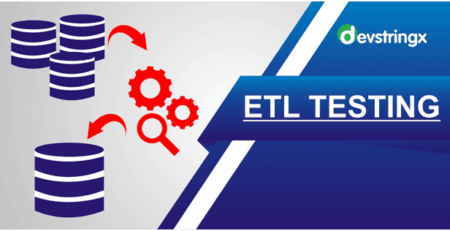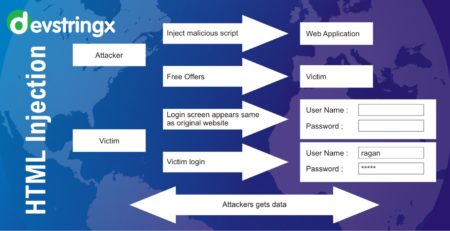A Comprehensive Guide to Java Testing Frameworks – DS
The importance of effective testing cannot be emphasized enough in software development. The consequences of having a flawed code, from glitches to major security breaches, can spell disaster for businesses. For more than a decade, Java has been a programming language used across different industries, highlighting the need for reliable testing frameworks.
Java Testing Frameworks
- Junit
- TestNG
- Mockito
- Spock
- Cucumber
- Selenium
- JMeter
- Arquillian
Understanding the Evolution
Since its inception, Java has transformed as it expanded its capabilities. In the early days, developers relied on repetitive testing procedures they implemented themselves – which were often prone to errors. The introduction of JUnit was a defining moment in Java programming history that paved the way for automated and dependable testing to become a significant part of the development process.
JUnit introduced unit testing as a concept that allowed developers to test components or “units” of code for behaviors. This breakthrough not only improved error detection at early stages but also streamlined the integration process by reducing long-term developmental complexities involved in merging separate units.
The demand for a variety of testing approaches, such as integration, functional, and end-to-end testing, has resulted in the development of diverse testing frameworks in Java.
The Importance of Java Testing Frameworks
Java testing frameworks play a crucial role throughout the software development process by emphasizing precision, efficiency, and reliability. These frameworks form the foundation of software solutions by ensuring code verification, performance optimization, and alignment with user expectations and business goals. They enable testing methodologies that proactively address issues promoting code integrity while streamlining the iterative development cycle.
1) Scalabilty and Performance Assurance
Java testing frameworks equip developers with tools to evaluate how software performs under different loads, guaranteeing that applications can scale without sacrificing performance. By utilizing stress, load, and performance testing frameworks specifically designed for this purpose, teams can identify bottlenecks and performance concerns during development. It ensures that the software is optimized to meet real-world conditions.
2) Risk-Mitigation
With each new release, there is a risk of introducing regressions that could disrupt existing functionality. Java testing frameworks facilitate regression testing to ensure that new code changes do not adversely impact already established features. Most importantly, Continuous testing throughout the development cycle is crucial for mitigating risks related to functionality, performance, and security. It does not only protect the application itself but also safeguards user data and maintains overall business integrity.
3) Improved Collaboration and Communication
Modern testing frameworks support Behavior Development (BDD), which encourages creating tests using language that non-technical team members can easily understand. This approach enhances communication between non-technical teams, ensuring that custom software development companies and business stakeholders have a shared understanding of development goals. It fosters decision-making and promotes alignment between software functionality and business objectives.
4) Cost Effectiveness
Implementing a testing framework requires an initial investment, but it yields significant long-term benefits. By identifying and addressing bugs, performance issues, or security flaws in the development process, organizations can avoid excessive costs associated with fixing during post-production. Additionally, automated tests reduce workloads, enabling efficient allocation of resources and saving time and money that would otherwise be spent on troubleshooting and maintenance.
5) Optimized User Experience
Java testing frameworks go beyond assessing the performance aspects of an application; they also ensure a smooth and efficient end-user experience. Usability testing plays a crucial role in helping developers gain a better understanding of the user journey. It ensures that the application is intuitive and meets user expectations, which is essential for creating a product that resonates with users and succeeds in the market.
6) Standardization and Compliance
These two are particularly important in industries where applications need to adhere to technical standards. Testing frameworks help organizations enforce compliance requirements by incorporating tests into the development process. It helps avoid complications and builds trust with users.
7) Continuous Improvement and Learning
After release, Java testing frameworks enable testing in production, allowing teams to collect data, monitor application performance, and gain insights into real-world usage scenarios. This feedback loop is invaluable for enhancement, enabling teams to learn from each deployment and improve versions of the application.
Good to Read:- Upcasting and Downcasting in Java with Examples
Exploring Various Java Testing Frameworks
Understanding the diversification of Java testing frameworks requires navigating through various tools and methodologies. Each framework offers capabilities catering to testing paradigms such as unit testing, integration testing, or behavior-driven development. By adopting these frameworks, developers can build resilient applications that prevent unexpected failures while delivering seamless user experiences.
1) Junit
The latest versions provide developers with features such as parameterized tests, personalized names, and more. It is useful for test-driven development (TDD), making it easier to create and maintain a codebase that’s resistant to bugs. JUnit supports annotations like @Test, @BeforeEach, and @AfterEach, which help create an easy-to-navigate testing environment.
2) TestNG
Taking inspiration from JUnit, TestNG expands its capabilities by offering an execution model, including features like grouping, sequencing, and parameterizing tests. It is particularly suitable for high-level testing, such as integration and end-to-end testing. TestNG can handle threaded testing and allows flexible test configurations. This framework also provides support for data-driven testing by allowing integration with data sources like Excel sheets, databases, or XML files.
3) Mockito
Mockito focuses on creating test doubles or Mock objects to simplify handling dependencies. It ensures that units are tested in isolation and promotes reliable test results. Mockito is especially useful for behavior-based testing, ensuring the system’s external dependencies do not lead to unpredictable tests.
4) Spock
Spock is a testing framework based on Groovy that brings an intuitive approach to testing. It focuses on improving readability and providing test documentation. The specification language used in Spock reduces the need for code, allowing for the expression of test cases. This framework seamlessly integrates with build tools and offers powerful features like data-driven testing and mocking.
5) Cucumber
Cucumber is a pioneering tool in behavior-driven development (BDD). What sets it apart is its Gherkin language, which enables the definition of test cases using language. It helps bridge the communication gap between teams and stakeholders. With Cucumber, you can write test cases that also serve as project documentation, enhancing clarity and reducing ambiguity within project scopes.
6) Selenium
Selenium is primarily used for testing web applications. It automates browsers to simulate user interactions and validate the behavior of applications. One of its strengths is browser testing, allowing you to test your application against different browsers and versions, ensuring compatibility across various platforms.
7) JMeter
JMeter goes beyond testing by specializing in load testing. It enables developers to understand how an application behaves under stress by simulating scenarios with multiple users. Doing it helps assess the load capacity and performance of an application under diverse conditions.
8) Arquillian
Arquillian is a JBoss project that simplifies integration testing by handling the complexities of starting and stopping containers seamlessly. Its purpose is to provide developers with hassle-integration testing capabilities. It provides support for application servers and improves the experience of developers by simplifying the management of the container lifecycle.
Good to Read:- Garbage Collection in Java: Types, How It works, Example
Conclusion
In conclusion, testing in Java goes beyond finding defects. It involves strategies for prevention, continuous improvement, security, performance, and overall software health. With the abundance of frameworks available for development, teams need to select tools that align with their project requirements, team skills, and term technical goals.
As the field continues to evolve, keeping up with trends and understanding the context of these tools helps developers make informed choices. It ensures that teams are not merely writing code but creating high-quality software solutions that can withstand time usage demands and user expectations. By employing the testing framework, any Java application can become a benchmark of reliability and excellence.














